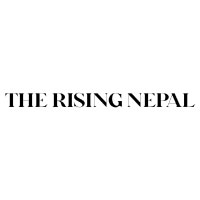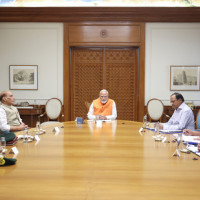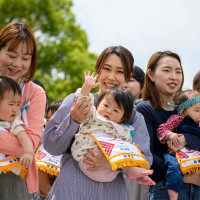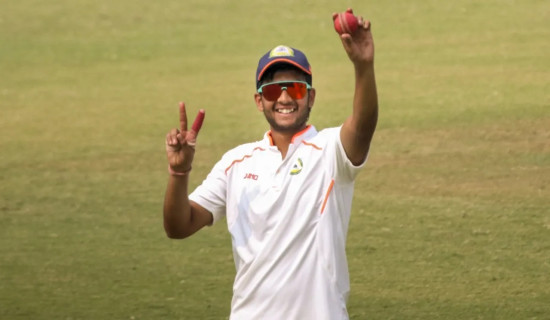- Monday, 5 May 2025
Salutations Reflect Culture Of Society
Tea in hand at a local shop near my college, the usual flamboyant dai walked in with the expected greeting, “K chha haalkhabar?” (What’s the news?). A proud head nod served as the response, regardless of anything hidden or denied. The tea lacked sugar, but that detail didn’t warrant mention. Language and greeting customs revealed a deep-rooted culture of wishing for others’ well-being, often shown in the common follow-up question, “Khana khanu bhayo?” (Have you eaten anything?).
On holidays, the day might start at noon, with breakfast barely begun, while neighbours were already on their second meal. When asked the rhetorical question, the reply would be “ah khaye” (Yes, eaten). In those moments, white lies felt significant. The intent wasn’t to deceive but to express shared norms, particularly the habit among Nepalis of eating in generous quantities (not monetary ones).
In English, “How are you?” presents a social dilemma: responding “fine” differs from saying “lousy,” making lying sociologically reasonable. Cultural habits often go unnoticed until contrasted with others. When foreigners spoke Nepali, the tone carried a charming hint. Their greeting, “Sanchai hunu hunchha?” (How is your health?), even with a slight accent, conveyed warmth and openness.
Western greetings had begun blending with Nepali ones. Observations pointed to newer generations choosing “Hey,” “What’s up,” or the casual “oi” over native expressions. The change wasn’t inherently wrong, but it wasn’t without a cost. Even eyebrow flashes replaced verbal exchanges.
Greeting rituals everywhere reflected etiquette and custom, cross-cultural constants. Consider the Nazi salute, once a Roman gesture, now carrying derogatory meaning. Even public figures like Elon Musk faced criticism for passionate gestures. In Tibet, sticking out the tongue as a greeting dates back to the 9th century. Among the Māori of New Zealand, the nose-rub mirrored the Western handshake. Polynesians rubbed backs or sniffed breath; East Africans greeted by spitting on the ground.
In Japanese culture, “Konnichiwa” fits the afternoon, while “Ohayou gozaimasu” belongs to mornings, reinforcing a time-specific greeting culture. English stood out for using “hello” both on the phone and in person. By contrast, Russians, Swedes, and French said allo, hallå, and allô on the phone only, not face-to-face. Similarly, “moshi-moshi” in Japanese belonged solely to phone conversations.
Greetings, often void of real content, functioned more as a ritual than communication. Non-verbal ones — like averting eye contact — paralleled primitive behaviours among animals, reducing confrontation. In Asian cultures, bowing communicated respect and hierarchy. Western customs like handshakes emphasised equality and trust. During the COVID-19 pandemic, namaste gained global appeal — simple, contactless, and meaningful.
Language learners always begin with salutations. Early French lessons included greeting phrases, structured as part of formal social routines. In Nepali households, children were taught to greet guests and speak to shopkeepers — basic but vital social practices.
The idea of a prime minister exchanging fist bumps with diplomats, as Barack and Michelle Obama famously did, still felt unlikely in our political scene. Nepal’s linguistic landscape featured 124 mother tongues across four major families — Indo-Aryan, Tibeto-Burman, Austro-Asiatic, Dravidian—and one isolate, Kusunda. Such diversity reflected a rich heritage. There was no need to retreat from tradition; there remained so much to pass on. Namaste to all.
















